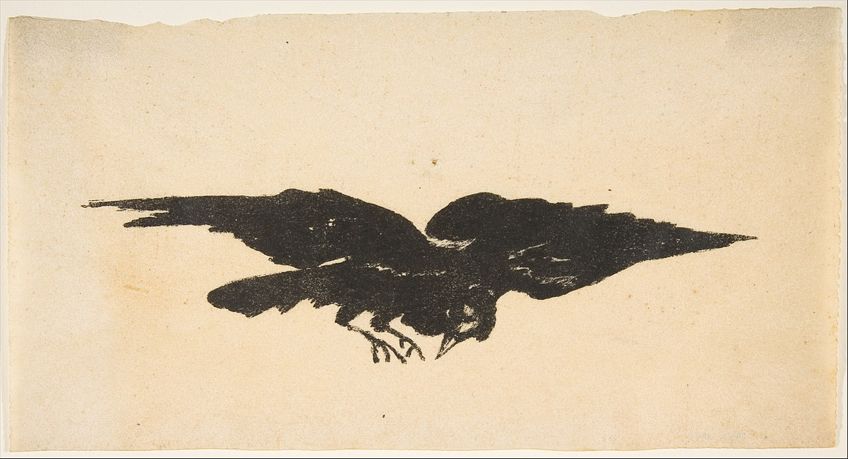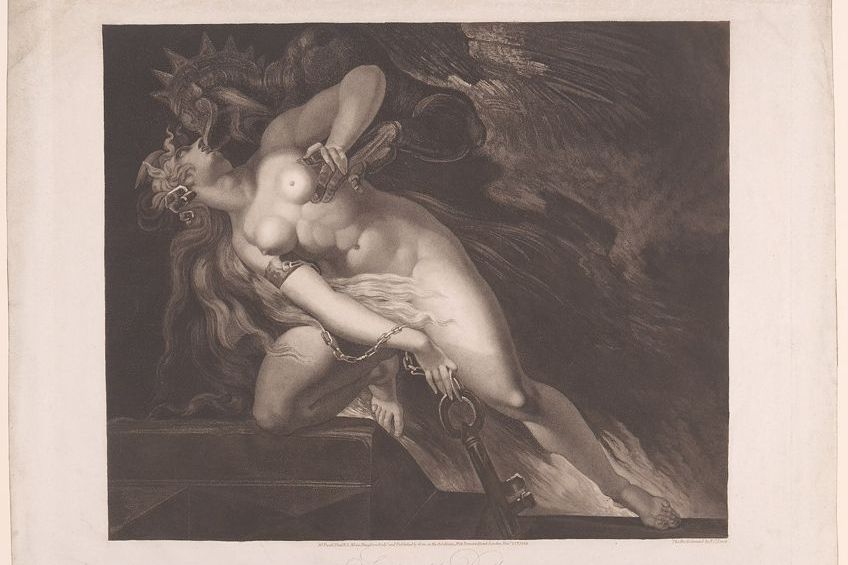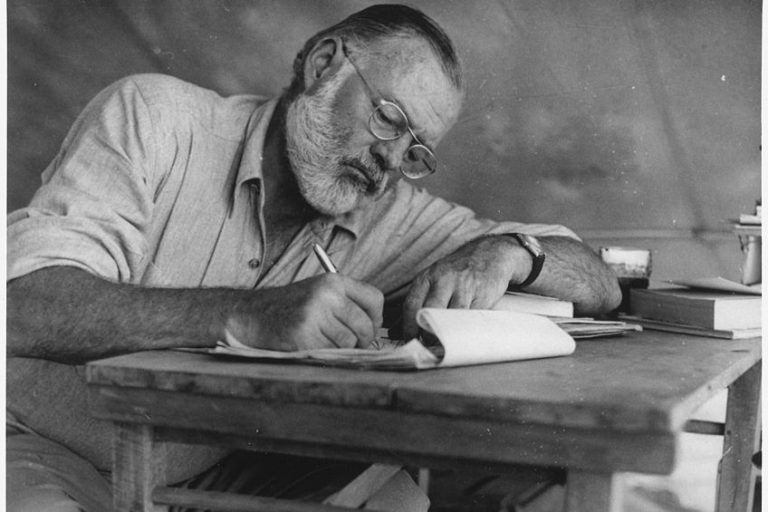Personification in Poetry – An Important Poetic Device to Know
There are some devices found in poetry that transcend poetry on a regular basis, and personification is one of those things. While personification exists outside of poetry, its place in poetry will be our primary discussion point today. In the process, we will discuss a personification definition in poetry, the use of this form in everyday language, why it is used in the first place, how it differs from anthropomorphism, and several examples of personification in poetry. All of these factors together should give a good overview of the topic. So, if you want to know about personification in poetry, then this discussion is a good place to start!
A Look at Personification in Poetry
Personification is a very common element of poetry and ordinary language. The basic idea is that this device refers to the way in which we can imbue a non-human with human qualities. This means that we can give organic things, like plants and animals, or non-organic things, like rocks or man-made objects, humanlike qualities. We are going to explore this in much more depth below, but before we get to any of that, let’s first have a look at a summary for those who may need it.

Summary of Personification in Poetry
When it comes to understanding personification in poetry, we should have a look at far more than only a brief summary, but for those who either don’t want to read on or those in a hurry, this summary should give a good overview of things. This is the quickest way to learn about personification in poetry.
- Personification gives human qualities to non-humans. The general idea behind personification, in general, is that it is a device used to provide non-human creatures or objects, like animals or plants, humanlike qualities. For instance, “the wind whistled” gives the wind, a non-human entity, the human quality of being able to whistle.
- Personification is a common poetic device. When it comes to poetry, personification is used quite often. This device is a good means of exploring themes and ideas through the perspective of something that is not human but can help us to explore human thoughts.
- Personification is used in ordinary language. While this article does predominantly examine the ways in which personification is used in poetry, it can also be used in ordinary language. All poetic devices can find their way into ordinary language as we speak to one another.
This has been our quick little overview of personification in poetry, but if you want to have an answer to the question, “What is personification in poetry?”, you will need to keep reading.
While this summarized overview provides the basic points, it does not go into much detail about this common poetic device.
A Personification Definition in Poetry
So, what is personification in poetry in the first place? This is a term that is used to describe the technique of ascribing human characteristics onto non-human things. This can mean that we give human characteristics to animals, plants, rocks, whole seasons, or nebulous concepts like happiness or death. This is generally done by using language that is typically reserved for humans and simply applying it to non-humans.
It can be easy to give an example of personification in poetry by pointing towards statements like “the trees sang in the wind” or “birds talked amongst themselves”. This is because we can see these kinds of statements as using personified terms, like “sang” and “talked”. Trees do not sing, but it may sound like a song, and birds do not “talk”, in the human sense, but rather communicate.

Now, there are certain ways of arguing about some of these instances, such as some claiming that a bird “talking” is personified because humans talk while birds just make noises that allow for communication, but this can often become bogged down in unending arguments that have no way of being resolved. Language is often exclusionary of non-humans, and so practically any instance of giving a non-human thing a human term can be called an instance of personification.
This is used in poetry all the time, but we will go into some of those uses in one of the below sections. Before that, what about personification in ordinary language? Is it also used there? Or is this something that is exclusive to the world of poetry?
Personification in Ordinary Language
Personification is used in far more than only poetry. While it is a rather common poetic device, it is also used in prose, music, and drama, and also in standard human communication. We use personification all the time to describe how we experience our world. We only have our own perspectives, and so it makes sense that we would try to push these perspectives onto other, non-human things.
Think of when we may try to describe the way that something sounds.
Imagine a strange wind has passed through an area and it rubs against the walls of the nearby buildings and trees in such a way that it produces a kind of howling, screaming effect. The wind is not screaming. It may just sound like that to us, but when we want to make a sound like that, we would be screaming. And so, we have ascribed our own thoughts and experiences onto something that cannot have our experiences. This is why and how we personify.
The Uses of Personification in Poetic and Ordinary Language
Personification is a fantastic device to use in both poetic and ordinary language. It allows us to ascribe human qualities onto something else, and this can allow us to better understand it. When we personify the cold as an actual entity that wants to make us uncomfortable, then we can come to terms with it. We can comprehend and discuss it in a way that we had not before.

We can personify abstract ideas and concepts to make them easier to understand. It can help us to relate to others and the world around us. In addition, we can visualize the things that we personify. If we use that previous example of personifying the concept of the cold, we can better visualize it as a thing that stands against us. There are a great many ways that personification can be used in and outside of poetry.
Personification Versus Anthropomorphism
This is a rather important distinction to make in terms of literary techniques. Personification and anthropomorphism are somewhat similar to one another but do have very different means of being implemented, and it could be argued, in very broad terms, that anthropocentrism is a kind of personification, but in a highly extended manner. This is why arguing in that sense is not particularly beneficial.
So, if personification is giving non-human things human characteristics, then what is anthropomorphism? Well, this is the term used to describe the way in which human abilities can be granted to things, especially animals, to the point where they are basically people.
So, take something like the Ents from The Lord of the Rings. They are tree people.
They are actual trees, but they are also able to walk around and talk to each other. They have a society. This isn’t a personified statement like, “the trees shivered in the wind”, this is trees being actual people. Some of the most common examples of anthropomorphism can be found in anthropomorphized animal characters. Some of the earliest being “talking animals” like those seen in texts like Aesop’s Fables or later pieces of media like various Disney films, including Robin Hood and Zootopia. So, this is the difference between personification and anthropomorphism.
Examples of Personification in Poetry
What is personification in poetry? This question has already been answered in the abstract, but what about in more specific terms? To truly understand an element of poetry, it can often be best to have a look at a few instances of it being used. So, we are going to spend this section having a look at a few different examples of personification in poetry. We may have provided a personification definition in poetry already but having a look at a few tangible specifics can help a lot. So, let’s do that!

I Wandered Lonely as a Cloud (1807) by William Wordsworth
| Date Published | 1807 |
| Type of Poem | Lyric poem |
| Rhyme Scheme | ABABCC |
| Meter | Iambic tetrameter |
| Topic | Nature |
I Wandered Lonely as a Cloud is one of the best-known Romantic poems and a stunning example of personification in poetry. The use of personification, in this particular sense, comes in the use of the cloud that the speaker is compared to. He discusses the way this cloud moves through the sky as if it has no purpose at all, and in doing so, the speaker gives this cloud humanlike characteristics and motivations (or the lack of motivations).
There are also other instances of personification in this poem, but as the very first line of the poem establishes this particular instance of personification through a simile, it is the first one that springs to mind when examining this poem.

To Autumn (1820) by John Keats
| Date Published | 1820 |
| Type of Poem | Lyric poem |
| Rhyme Scheme | ABAB |
| Meter | Iambic pentameter |
| Topic | Autumn |
To Autumn is another of the great poems that was produced during the Romantic period and one of the most stunning examples of personification in poetry. In this particular case, the entire poem serves as a personified entity. The poem discusses the season of Autumn and personifies the season itself, and so we are given images of this season as, for instance, being friends with the sun and helping the plants to grow.
There is a pervasive sense of personification throughout the poem, and it aids us in connecting with this season as if it were a thinking thing.

The Brook (1886) by Alfred Lord Tennyson
| Date Published | 1886 |
| Type of Poem | Ballad |
| Rhyme Scheme | ABAB |
| Meter | Alternating |
| Topic | A brook |
The Brook is a poem about, as the name probably gives away, a brook. This is a small stream that curves its way through the world, and this stream is personified throughout the poem with the personal pronoun of “I” and the way in which this “I” discusses the way that they move, the sounds they make, and the effects that they produce. This, like the previous poem, makes use of a pervasive sense of personification that is meant to draw us in.
It also aids us in seeing this brook as a living, breathing thing that has made decisions with regard to what it does in our world.

Because I could not stop for Death (1890) by Emily Dickinson
| Date Published | 1890 |
| Type of Poem | Lyric poem |
| Rhyme Scheme | Loose ABCB |
| Meter | Alternating |
| Topic | Death |
Because I could not stop for Death is a poem with a personified entity. This is also probably one of the best-known examples of personification in poetry as the personified thing in this text is Death himself. The character of Death has been personified in many texts and is probably most associated with the image of the Grim Reaper. However, in this particular poem, this personified entity is portrayed less as a terrifying figure and more as one who acts like a gentleman and is peaceful and calm in their demeanor.
This example of personification in poetry goes to show that a nebulous concept like death itself can also be turned into a character.

Mirror (1963) by Sylvia Plath
| Date Published | 1963 |
| Type of Poem | Free verse |
| Rhyme Scheme | None |
| Meter | None |
| Topic | Identity and self-perception |
Mirror is one of the many powerful poems that Sylvia Plath produced in her life. The poem makes use of personification to transform a mirror into a character. This character of the mirror discusses the way in which it has no preconceived notions of anything and merely reflects reality back on us, and it is us, those who gaze into the mirror, who project our insecurities upon it.
The poem is a powerful and personal text that stands proudly alongside the other works that this poet created during her life.
Personification is one of the more interesting poetic devices out there, and its place in poetry has been solidified for a very long time. We can see this in the various examples of personification that we explored above, but we also had a look at a definition of personification, the various uses of it in both ordinary and poetic language, and how it differs from anthropomorphism. All in all, this should have given a good overview of personification poetry and the place of this device outside of poetry too.
Frequently Asked Questions
What Is Personification in Poetry?
This is a common poetic device and figure of speech that is used as a means of providing some kind of non-human entity, such as plants, animals, or even rocks, with humanlike qualities. This can often mean using certain words, that are meant to be human terms, to ascribe feelings or actions to non-human things. Some of these are simple and on a vocabulary basis, but others can be far more complex and can aid in producing a kind of extended metaphor in poetry.
Why Do Poets Use Personification in Poetry?
There are a great many reasons as to why poets may wish to use personification in poetry. This device is used to create a relationship between a non-human thing and a human idea, concept, feeling, or something similar and, for this reason, it can aid in relatability. In addition, it can be used to explore certain complex or abstract ideas. It can be used to help visualize something, emphasize a point, or even teach a human lesson to some. There are a great many reasons for personification poetry to exist.
Is Personification Only Used in Poetry?
While personification can be used as a poetic device, it is also a figure of speech. This means that it is very commonly used in ordinary language as well as other literary forms. For instance, it can be used in prose, music, and drama. It can also be used in rhetoric and speeches, as well as simple ordinary conversation between two or more people. Personification is a very common thing, but it can simply be more formalized when it has been placed within the confines of a poem.
What Is Commonly Personified in Poetry?
There are many things that can serve as personified things within poetry. Personification poetry can make use of animals, plants, minerals, abstract concepts, seasons, types of weather, forces of nature, and so on. There is no limit as to what can be personified. All that needs to be remembered is that if something is not human, then it could be used in a poem in a personified capacity. If the thing is a human, then it is already deemed a person and so it cannot be personified.
What Are Famous Examples of Personification in Poetry?
Personification has been used in so many poems over the centuries, but some of the most famous examples of personification in poetry include poems like I Wandered Lonely as a Cloud (1807) by William Wordsworth, Because I could not stop for Death (1890) by Emily Dickinson, and To Autumn (1820) by John Keats. However, this list is far from anything that could be deemed comprehensive, as there are many other personification poems out there in the world.
Justin van Huyssteen is a freelance writer, novelist, and academic originally from Cape Town, South Africa. At present, he has a bachelor’s degree in English and literary theory and an honor’s degree in literary theory. He is currently working towards his master’s degree in literary theory with a focus on animal studies, critical theory, and semiotics within literature. As a novelist and freelancer, he often writes under the pen name L.C. Lupus.
Justin’s preferred literary movements include modern and postmodern literature with literary fiction and genre fiction like sci-fi, post-apocalyptic, and horror being of particular interest. His academia extends to his interest in prose and narratology. He enjoys analyzing a variety of mediums through a literary lens, such as graphic novels, film, and video games.
Justin is working for artincontext.org as an author and content writer since 2022. He is responsible for all blog posts about architecture, literature and poetry.
Learn more about Justin van Huyssteen and the Art in Context Team.
Cite this Article
Justin, van Huyssteen, “Personification in Poetry – An Important Poetic Device to Know.” Art in Context. November 23, 2023. URL: https://artincontext.org/personification-in-poetry/
van Huyssteen, J. (2023, 23 November). Personification in Poetry – An Important Poetic Device to Know. Art in Context. https://artincontext.org/personification-in-poetry/
van Huyssteen, Justin. “Personification in Poetry – An Important Poetic Device to Know.” Art in Context, November 23, 2023. https://artincontext.org/personification-in-poetry/.









